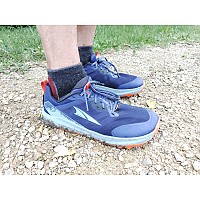Coleman C300 Performance gas canister
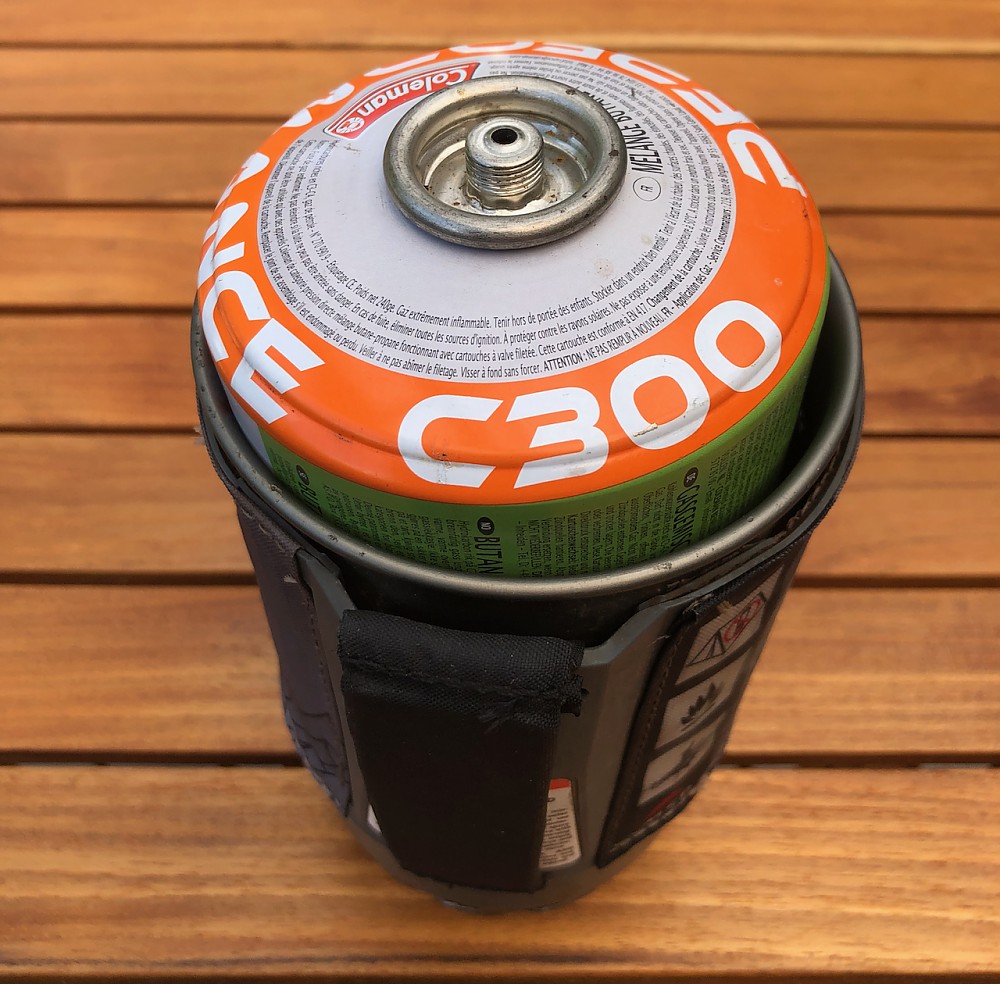
A mix of propane and n-butane in a 240 g canister with non-standard dimensions. OK for summer use, but won't work with some types of stoves, and the non-standard canister won't nest well in some system pots
Pros
- OK for summer use
- A bit less expensive than brand-name mixes
- Slightly more fuel per can weight
Cons
- Butane mix inferior to isobutane mix at lower temperatures
- Won't work with several backpacker-type stoves despite standard-looking connector
- Canister won't nest well in pots made for standard canisters
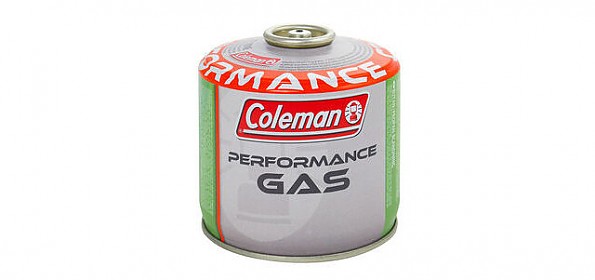
It may seem a bit odd to review a particular type of gas canister. After all, within a specified range, they are all pretty much the same—a mix of isobutane and propane (typically something like 80/20% in quality canisters) and sometimes n-butane (lower quality but actually quite serviceable in warmer temperatures) in one of three standard sizes: 100, 230, and 450 g of fuel, all with a standard threaded connector that works with most currently available backpacker type canister stoves.
In general you just buy whatever brand your local retailer has to offer. In fact, it seems that most canisters of this type are manufactured, filled, and customized with brand labels etc. at a single facility in Korea. But as of about 2017, Coleman decided to go its own way, and switched to a different manufacturer, in France.
One of the big-box outdoor gear retailers in Norway, XXL Sport, only sells Coleman canisters (last I checked). I innocently assumed there wasn’t much functional difference and bought a few canisters. Coleman C300 Performance is labeled as a butane/propane blend, with the proportions not specified on the can, but XXL’s web site suggest that it is 70/30.
Because the butane part is n-butane and not isobutane, the Coleman mix will not perform as well at colder temperatures as an isobutane blend. The laws of physical chemistry say that the propane will vaporize and burn faster than the butane, so that the mix becomes more and more enriched in butane as the canister empties. The same is true of isobutane, but it has an intermediate vaporization temperature so the problem is not as bad.
At temperatures approaching the vaporization temperature of butane (0.6˚C/33˚F at atmospheric pressure), noting that the canister self-cools to well below ambient temperature due to all the vaporization going on in there, the stove will burn more and more weakly until there is not enough gas vaporizing to keep it going at all. (This is not a problem with an inverted canister, liquid feed stove where the fuel mix exits the canister as a liquid). All this is amply discussed in a series of posts (start here) on Hikin’ Jim’s Adventures in Stoving blog/review site and other backpacker websites.
One workable solution is to warm the canisters in a sleeping bag or under a jacket before use, but they may still cool rapidly at below freezing temperature or with extended use.
I used the Coleman canisters mainly with my MSR Windburner system and more recently with a Soto Amicus canister top stove and they worked well enough in warmer conditions but with the usual problems at lower temperature and as they got near empty. It would require extensive experimentation to determine if those problems were really any better or worse than a standard canister with an isobutane mix, but as noted above we should expect a butane mix to perform more poorly at autumn to winter temperatures.
One thing that will affect my future canister choice is the non-standard canister dimensions.
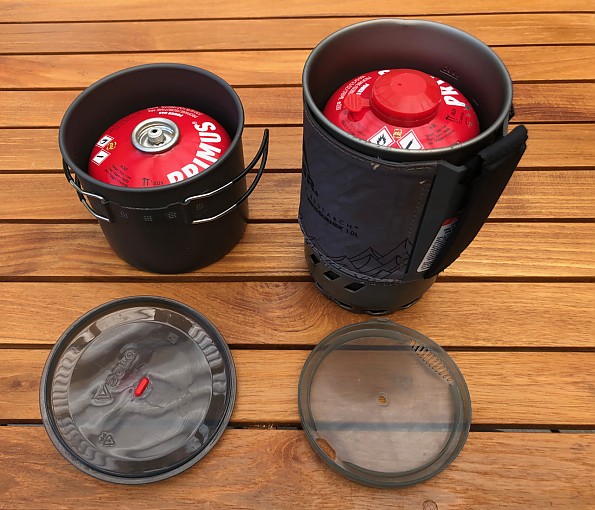
The 1.1 L MSR Windburner pot is sized to hold the burner head and a standard 100 g canister, and the 1.8L pot holds the burner head and a standard 230 g canister. The Coleman canister has the same diameter as the standard 100 g canister, but at about 100 mm / 4 in it is too tall to fit in the 1.1 L pot with the burner, and just barely fits in the 1.8 L pot by nesting it inside of the rim of the burner head.
It will just fit in my Soto New River 1 L pot, but with more space to rattle around in and no room for the small canister stand that I can fit in with a standard 230g canister, which fits nicely in the pot. So some of these space-saving stowage options are off the table.

Furthermore, it appears that the nipple on the Coleman canister departs enough from the standard that it won’t work with a variety of stoves, including at least the earlier MSR PocketRocket variants, Soto Windmaster, and BRS-3000T. This seems to be because the pin that opens the canister valve is set a little deeper than on the standard canisters. This was reported by Hikin’ Jim in 2017 and still seems to be true as of 2020. So it was just luck that my two stoves happen to work with the Coleman canister.
Here in Norway and I think in the US as well the Coleman canisters are significantly less expensive than other name brands (mainly MSR, Jetboil. and Primus on this side of the puddle), probably due to the substitution of butane for isobutane. So there’s that. And they contain 4% more fuel (240 vs. 230 g) and so may be a bit more weight-efficient.
What this all boils down to (intended) is that if 1. You need canisters for summer/low elevation or have an inverted canister stove, 2. Your stove is compatible with a slightly deeper canister pin, 3. You aren’t using a stove/pot system that is designed around standard canister sizes, and 4. You are a gram-shaver or going out for long enough that the slight weight difference really matters, then Coleman C300 is a perfectly good and generally less expensive choice. Change any of those criteria, you may be better off paying a little more for a good gas mix and system-compatible canister.
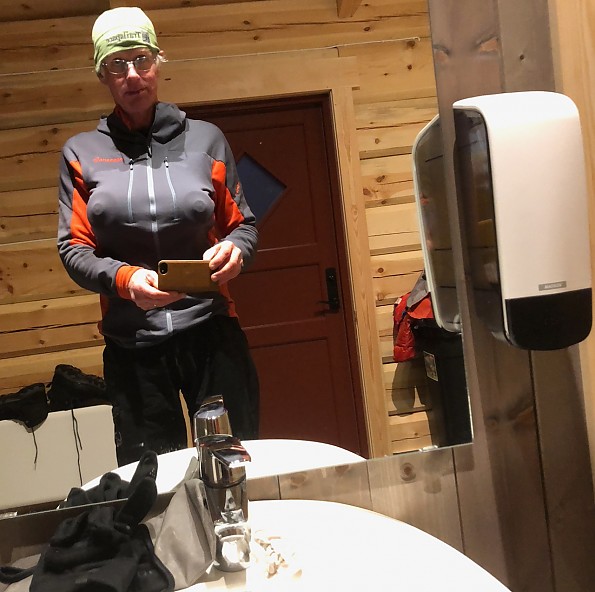
Background
I switched from liquid fuel to mainly canister stoves in around the turn of the millennium, including MSR Windpro, original PocketRocket, and Windburner models and more recently a Soto Amicus. I have generally used whatever canisters are available mainly in summer, autumn, and spring conditions, and have not tried any winter-specific gas mixes.
Source: bought it new
Price Paid: NOK59


